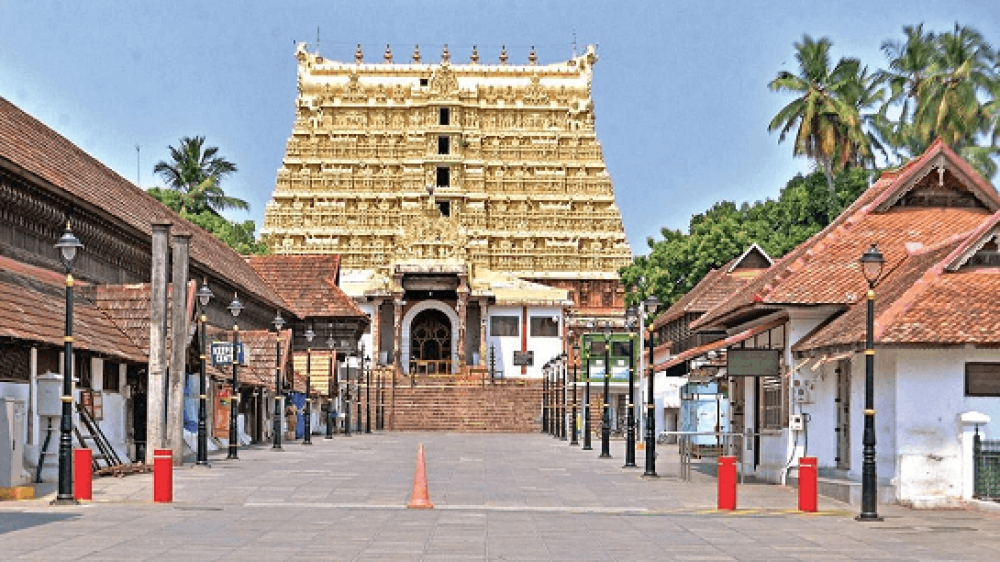

The Padmanabhaswamy Temple is one of the most revered shrines for Hindus located in the heart of Thiruvananthapuram, Kerala, India. It is dedicated to Lord Vishnu in the "Anantha Shayanam" posture, the eternal yogic sleep on the serpent Adi Shesha. This temple stands as a crown jewel for Kerala's spiritual and cultural heritage.
The origin of the temple dates back to 8th century CE, with references found in ancient Hindu scriptures, though the structure as seen today showcases an intricate fusion of Kerala and Dravidian architecture that emerged over many centuries, prominently from the 16th Century CE when the temple got its present form under the rule of the Travancore Kingdom.
Tourism to Padmanabhaswamy Temple has been traditionally rooted in pilgrimage. The temple has been a focal point for worshippers and has seen a multitude of devotees visit every year to offer their prayers. Historically, the temple was primarily visited by Hindu pilgrims, but in time, it has also attracted history buffs, architecture enthusiasts, and international tourists due to its profound cultural significance and astonishing architectural beauty.
A significant spike in tourism was noticed after the year 2011, when the temple's underground vaults, especially the mysterious Vault B, were explored, and treasures worth billions of dollars were unearthed. This event made headlines globally, piquing the curiosity of many, thus turning the temple both into a spiritual haven and a hotspot for those intrigued by history and mystery.
In recent years, tourism trends have shifted with more focus on sustainable and responsible tourism. Visitors are encouraged to be mindful of the temple’s sanctity and the preservation of its ancient structures. Moreover, the temple management has tightened security and visitor policy, particularly towards the safeguarding and conservation of the historically enriched temple premises after the revelation of its hidden treasures.
Another trend is the increasing use of digital platforms for pilgrimage tourism. Virtual tours, online pooja bookings, and digital informative guides have likely been on the rise, especially as a response to the travel constraints imposed by events such as the COVID-19 pandemic.
The temple town of Thiruvananthapuram has also seen a growing integration in terms of tourism offerings, where visitors not only visit the Padmanabhaswamy Temple but also enjoy the city's other attractions, local cuisine, and participate in cultural festivals, providing a holistic experience of Kerala's capital.